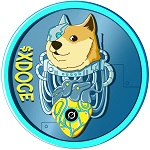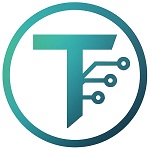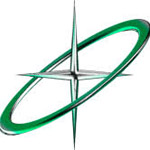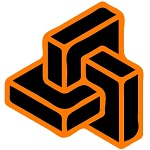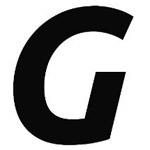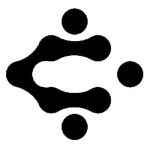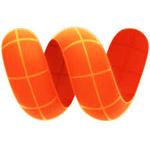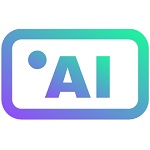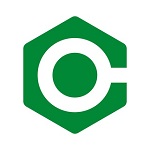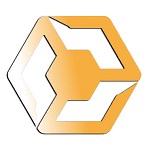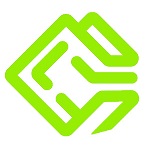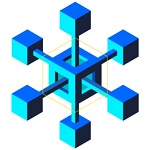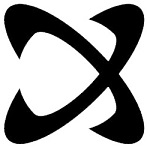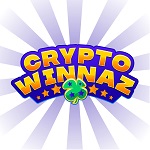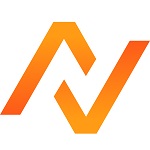DeFi
| Projects | Status | Date start | Raised | Launchpad | Ecosystem | X score | Interest lvl | Industry | ||
|---|---|---|---|---|---|---|---|---|---|---|
IDO Upcoming IDO | Jul 11, 2025 | Exchanges & Wallets +4 | ||||||||
IDO Upcoming IDO | Jul 08, 2025 | DeFi +2 | ||||||||
ICO Pre-Sale | Jul 08, 2025 | DeFi +2 | ||||||||
ICO IDO Ongoing Ongoing IDO | Apr 20, 2025 | Trading & Investing +7 | ||||||||
ICO Pre-Sale | Apr 20, 2025 | AI +3 | ||||||||
ICO Pre-Sale | Apr 20, 2025 | $1,2M | Software +8 | |||||||
ICO Ongoing | Apr 20, 2025 | Gaming +4 | ||||||||
ICO Pre-Sale | Apr 20, 2025 | DeFi +1 | ||||||||
IEO IDO Ongoing IEO | Jul 01, 2025 | $12M | Crowdfunding & Lending +3 | |||||||
ICO Pre-Sale | Jul 01, 2025 | Finance +2 | ||||||||
IDO Upcoming IDO | Mar 22, 3035 | Sport +6 | ||||||||
ICO Pre-Sale | Mar 22, 3035 | $0,02M | DeFi +1 | |||||||
ICO IDO Ongoing | Feb 25, 2025 | Data Analytics +3 | ||||||||
IDO Ongoing IDO | Jul 18, 2025 | Blockchain +3 | ||||||||
ICO Ongoing | Jul 18, 2025 | DeFi +1 | ||||||||
ICO Ongoing | Jul 18, 2025 | Finance +2 | ||||||||
ICO Ongoing | Jul 18, 2025 | Blockchain +5 | ||||||||
ICO Ongoing | Jul 18, 2025 | Blockchain +2 | ||||||||
| Jul 18, 2025 | Blockchain +3 | |||||||||
| Jul 18, 2025 | DeFi +2 | |||||||||
| Jul 18, 2025 | Finance +1 | |||||||||
| Jul 18, 2025 | DeFi +1 | |||||||||
| Jul 18, 2025 | Privacy & Security +6 | |||||||||
| Jul 18, 2025 | Mining +4 | |||||||||
| Jul 18, 2025 | $1,5M | DeFi | ||||||||
| Jul 18, 2025 | $3M | Finance +5 | ||||||||
| Jul 18, 2025 | $21,2M | Finance +5 | ||||||||
| Jul 18, 2025 | $25,94M | Exchanges & Wallets +3 | ||||||||
| Jul 18, 2025 | Crowdfunding & Lending +4 | |||||||||
| Jul 18, 2025 | $2,5M | Blockchain +4 | ||||||||
| Jul 18, 2025 | $2M | Crowdfunding & Lending +2 | ||||||||
IDO | Jun 24, 2025 | Software +4 | ||||||||
| Jun 24, 2025 | $65M | Privacy & Security +5 | ||||||||
| Jun 24, 2025 | DeFi +2 | |||||||||
IEO Past | Jun 20, 2025 | $2,4M | Trading & Investing +1 | |||||||
IDO | TBA | Real Estate +4 | ||||||||
| TBA | $2,5M | Identity & Reputation +9 | ||||||||
| TBA | $20,2M | Exchanges & Wallets +3 | ||||||||
| TBA | $11,8M | Exchanges & Wallets +3 | ||||||||
ICO | Jun 09, 2025 | Crowdfunding & Lending +4 | ||||||||
IDO Past | Jun 20, 2025 | $16M | Gaming +5 | |||||||
IDO Past | Jun 10, 2025 | AI +3 | ||||||||
ICO | Jun 10, 2025 | Gambling +3 | ||||||||
| Jun 10, 2025 | $2M | Crowdfunding & Lending +2 | ||||||||
| Jun 10, 2025 | Exchanges & Wallets +3 | |||||||||
| Jun 10, 2025 | DeFi +1 | |||||||||
| Jun 10, 2025 | Blockchain +3 | |||||||||
| Jun 10, 2025 | $17M | Blockchain +5 | ||||||||
IDO Past | Jun 05, 2025 | AI +6 | ||||||||
ICO | Jun 05, 2025 | DeFi +1 | ||||||||
Decentralized Finance of crypto industry
Back in the spring of 2021, Forbes journal labeled the DeFi sector as “a new dynamic that revitalized the cryptocurrency industry”. Indeed, today we can confidently state that DeFi has become an enduring trend that continues to grow in popularity.
What is DeFi
DeFi or Decentralized Finance are financial instruments in the form of services and applications created on the blockchain.
Most of the existing DeFi is created on the Ethereum blockchain and the number of new DApps in the field of decentralized finance is steadily growing. For example, the number of DApps in the ETH ecosystem has reached a figure of 1,160, according to DefiLlama.
It should be noted that ETH is still the leader in the DeFi segment and in terms of total volume locked (TVL) in smart contracts. Thus, Ethereum concentrates more than half of the funds, more than 45 billion dollars. At the same time, the total TVL of the DeFi sector is about 80 billion dollars.
How does DeFi work
In order to understand how DeFi works, we suggest that one of the key concepts of DeFi is to provide society with an alternative to the technologies involved in traditional finance and banking. In fact, decentralized finance provides a new model and financial tools in the form of open source blockchain protocols (DApps). And this means that DeFi opens up access to decentralized lending and new investment platforms to a large number of people, allowing them to generate passive income from cryptocurrency assets while significantly reducing fees, deposit and lending costs.
If Decentralized applications are open and accessible, then they do not require customers to provide personal information or create accounts through complex registration and verification mechanisms.
In addition, DeFi solutions function on the basis of various blockchains, with users interacting within a peer-to-peer network or P2P. Smart contracts are responsible for the correct fulfillment of transaction terms and the security of transfers.
All the work of decentralized finance takes place in accordance with the programmed rules and conditions without the participation of a third party. Transaction information is recorded in the blockchain, which eliminates the possibility of its replacement or deletion. Ultimately, DeFi offers the concept of a user having access to their assets at any time, not just during bank or broker business hours. In addition, all transactions on the blockchain take place around the clock and in real time. At the same time, the human factor is minimized because, as you can see, all work is automated.
It should also be noted that the decentralized nature of DeFi actually shifts the responsibility for the safety of assets to the user. Projects are not required to comply with regulatory compliance, unlike traditional financial institutions. However, many states are already working on the legal field for cryptocurrencies and decentralized finance.
Let’s look at a few of the prime uses for DeFi:
- Lending. DeFi allows borrowers and lenders to use cryptocurrencies or digital assets to borrow and lend without the involvement of traditional financial institutions.
- Decentralized Exchange Platforms (DEX). DeFi provides the ability to exchange cryptocurrency and other digital assets between users directly without the need for centralized exchanges.
- Insurance. DeFi offers cryptocurrency insurance options.
- Asset management. Using decentralized finance allows users to manage their own digital assets.
- DeFi also provides the ability to trade in-game items or NFTs. New technology is constantly evolving, which allows for a broader scope of digital assets.
- Yield Farming. An investment strategy in which the user provides liquidity to the protocol by locking up assets in a smart contract. In return, he receives a percentage of the platform’s revenue or management tokens.
- Real World Assets (RWA). Tokenization of real world assets. Art objects, intellectual property, real estate and various goods can be digitized.
Notably, DeFi is now being targeted by virtually every area of the blockchain and crypto industry that we know of.
Among them are GameFi, DEX exchanges, many modern blockchains, crypto wallets, oracles like Chainlink or Kylin Network, etc. At the same time, the fields of application are wider than it seems at first glance.
A few popular DeFi projects
- MakerDAO (now is Sky.Money)
- Lido
- EigenLayer
- Uniswap
- Compound
- PancakeSwap
Conclusion
The decentralized finance ecosystem includes a variety of services. Users have access to collateralized loans, lending, trading and other earning tools like farming. Participants in the crypto community can pick a project to suit their needs on almost any public blockchain. However, Ethereum remains the most popular network for DApps.
In addition, gaming projects with the Play-to-Earn concept are developing in the sector. Experts also consider the trend of tokenization of real assets and goods to be promising.
The above trends not only enrich the DeFi sector itself, but also contribute to its introduction into traditional finance.



